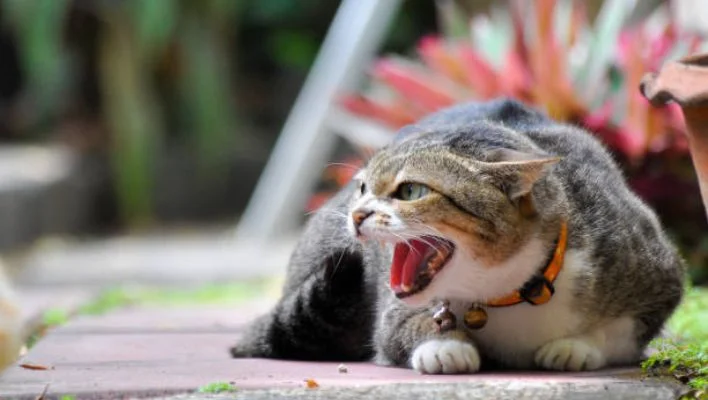Warning Signs When Introducing Cats: Identifying and Addressing
When introducing cats, it’s crucial to observe their behavior closely for any signs of distress or aggression. Key indicators include hissing, growling, and a stiff, upright tail, which suggest discomfort or fear.
Other warning signs include flattened ears, dilated pupils, and excessive hiding, indicating that the cat feels threatened or anxious. It’s essential to create a calm environment and allow the cats to acclimate at their own pace, providing separate spaces if necessary.
Monitoring their body language and interactions helps in understanding their comfort levels and ensuring a smoother transition.
Understanding these signals early on can prevent potential conflicts and foster a harmonious relationship between the new feline companions.
Introducing a new cat into your home requires thoughtful planning and a deep understanding of cat behavior. This guide offers essential steps to ensure a peaceful and successful integration of your new feline friend.

10 Early Signs of Discomfort When Introducing Cats
Recognizing these early signs of discomfort is crucial in addressing potential issues promptly, ensuring the well-being and happiness of your cat.
- Hiding More Than Usual: It’s natural for a new cat to seek out hiding spots as they adjust to their surroundings, but excessive hiding can indicate significant discomfort or fear.
- Changes in Eating Habits: Pay attention to the new cat’s appetite. A marked decrease or increase in food intake can signal stress or anxiety about the new environment or cohabitants.
- Excessive Grooming: Cats often groom themselves to self-soothe, but over-grooming to the point of hair loss or irritation suggests the cat is experiencing high levels of stress.
- Avoidance Behavior: If the new cat consistently avoids human interaction or the presence of other pets, it may indicate discomfort or unease with the new social dynamics.
- Unusual Vocalizations: Frequent or unusual meowing, growling, or hissing that differs from the cat’s normal vocalizations can be a sign of distress or discomfort in the new setting.
- Agitation or Restlessness: A cat that seems unable to settle down, constantly paces, or appears overly vigilant may be expressing anxiety about their new environment.
- Litter Box Issues: Sudden changes in litter box habits, such as avoidance or eliminating outside the box, can reflect stress or discomfort with the new living situation or litter box placement.
- Physical Signs of Stress: Watch for physical indicators of stress, such as dilated pupils, flattened ears, or a tucked tail, which suggest the cat feels threatened or uneasy.
- Decreased Playfulness: A noticeable lack of interest in play or interaction with toys can indicate a cat is not feeling secure enough to engage in normal playful behaviors.
- Changes in Sleeping Patterns: If the new cat sleeps significantly more or less than expected, or chooses hidden, isolated spots for sleep, it may be a sign of discomfort adjusting to the new home.
Understanding Cat Behaviour
Understanding cat behavior is key to forming a strong bond with your feline friend. Cats communicate through body language, vocalizations, and behavior patterns.
Key indicators like purring, slow blinking, and a relaxed posture signify contentment, while hissing, flattened ears, or a puffed-up tail indicate fear or aggression.
Observing their daily routines, such as grooming habits, playtime activities, and sleeping patterns, provides insights into their mood and health. Recognizing signs of stress, like excessive scratching or hiding,
Pre-Introduction Preparations When Introducing Cats
Before introducing a new cat to your home, pre-introduction preparations are essential for a smooth transition.
Begin by setting up an exclusive area for the new cat, equipped with necessities such as a litter box, bowls for food and water, and cozy bedding. This space will provide a safe and comfortable environment for the newcomer to settle in.
Gradually introduce the scent of each cat to the other using items like blankets or toys, fostering familiarity before physical interaction.
Ensure that your home has ample vertical spaces, like cat trees or shelves, for cats to retreat and observe their surroundings. It’s also important to update vaccinations and health checks for both cats to prevent any health issues.
These preparations help in minimizing territorial disputes and stress, paving the way for a peaceful and successful introduction of your new feline family member.
How To Properly Introduce Cats
Introducing cats properly requires a strategic and patient approach to foster a peaceful coexistence. Start by keeping the new cat in a separate room, allowing both cats to adjust to each other’s scent.
Gradual introduction through controlled, short interactions helps in building familiarity and reducing territorial tension.
Use of pheromone diffusers can aid in creating a calming environment. During face-to-face meetings, monitor their body language closely for signs of aggression or fear.
Consistently rewarding calm behavior with treats and affection encourages positive association. It’s vital to provide each cat with their own resources like food bowls, litter boxes, and resting areas to minimize competition.
If signs of stress or aggression persist, seeking advice from a veterinarian or a feline behavior expert can be beneficial.
This step-by-step method ensures a smooth and safe introduction process, promoting a harmonious living situation for your feline companions.
Aggressive Behaviour to Watch For
Monitoring for aggressive behaviors in cats is vital for preventing conflicts and ensuring safety. Key behaviors include hissing, growling, and swatting, which are clear indicators of fear or territorial aggression.
A cat displaying a stiff, arched back, puffed-up fur, and unsheathed claws is signaling readiness to defend itself. Biting, even in a seemingly playful manner, can escalate to more serious aggression if not addressed.
Redirected aggression, where a cat lashes out due to an unrelated frustration, is also common and requires careful handling.
Understanding these signs of aggression and their underlying causes, such as fear, illness, or territorial disputes, is essential for timely intervention and maintaining a harmonious environment for your cat.

Non-Aggressive But Concerning Behaviour
Observing non-aggressive but concerning behaviors in cats is key to identifying underlying issues. Signs like excessive vocalization, such as constant meowing or yowling, often indicate discomfort or a need for attention.
Changes in grooming habits, either neglect or excessive grooming, can signal stress or health problems.
A noticeable shift in sleeping patterns, such as increased lethargy or restlessness, is often a red flag.
Unusual litter box behavior, like avoidance or inappropriate elimination, suggests discomfort or a potential medical issue. Sudden changes in interaction, either increased clinginess or withdrawal, can be indicative of emotional distress.
Recognizing these behaviour early allows for prompt investigation and care, ensuring the well-being of your feline companion.
Final Thoughts
Introducing cats to each other requires careful observation and patience. By understanding and recognizing various behaviors – from early signs of discomfort to aggressive and non-aggressive but concerning behaviors – you can ensure a smoother introduction process.
Preparations before the introduction, understanding each cat’s behavior, and monitoring their interactions are crucial steps in fostering a peaceful and harmonious relationship between your feline companions.
Remember, each cat is unique, and their adjustment period can vary. With time, patience, and careful attention to their needs and behaviour, you can create a loving environment for your cats to coexist happily.
Related: Are Calico Cats Autistic?
How To Introduce Two Cats When One Is Aggressive?
FAQs
Successful cat introductions are indicated by relaxed body language, mutual grooming, playing together without aggression, and peaceful coexistence in shared spaces. Eating and sleeping near each other without tension also suggests a positive introduction process.
Introducing cats too quickly can lead to stress, aggression, and territorial disputes. It may cause long-term behavioral issues, hinder bonding, and create a hostile environment, making peaceful cohabitation challenging for both cats and their owners.
The best age to introduce a second cat varies, but generally, younger cats adapt more easily. Kittens or young adult cats, typically under two years old, often adjust better to new companions compared to older, more set-in-their-ways cats.
Hissing during initial cat introductions is common and often okay. It’s a natural, defensive communication indicating discomfort or fear. However, continuous hissing should be monitored as it can escalate to aggression, necessitating more gradual and careful introduction steps.
Cats that don’t like each other often display consistent aggression, such as hissing, growling, and swatting. Avoidance behavior, refusal to share space, and stress-induced health issues also indicate a lack of acceptance or compatibility between the cats.






